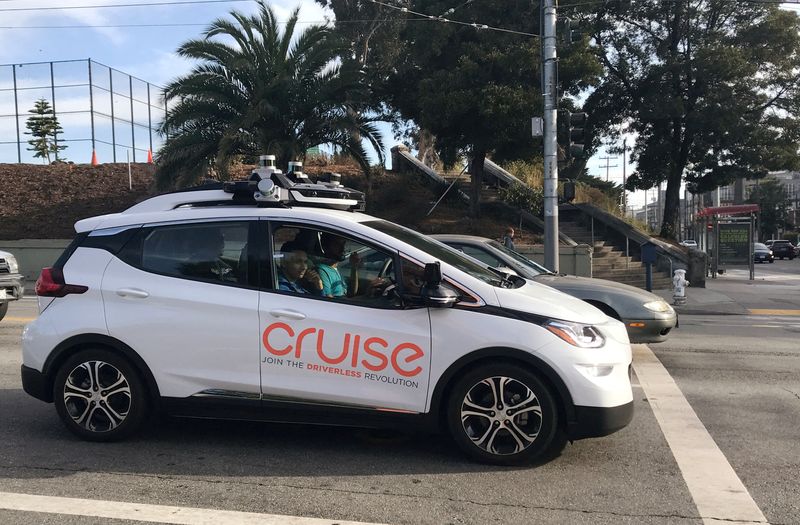By David Shepardson
(Reuters) -General Motors' Cruise robotaxi unit offered on Friday to pay $75,000 to resolve an investigation by California regulators into its failure to disclose details of a pedestrian crash involving a self-driving car.
In December, the California Public Utilities Commission ordered Cruise to appear at a Feb. 6 hearing, citing it for misleading the commission "through omission" on the extent and seriousness of the accident and for "misleading public comments" on interactions with the agency.
Cruise, which has fired nine executives, including its chief operating officer and chief legal and policy officer, over the October crash, asked for the hearing to be deferred and sought an alternative mode of dispute resolution.
Cruise, which has retained law firm Quinn Emanuel to examine its response to the crash, said in a filing on Friday the investigation was expected to be completed with findings made public before Feb. 6. Cruise also offered to boost its reporting of collisions to the commission as part of its settlement offer.
Cruise said it "is committed to undertaking significant process improvements with respect to its interactions with regulators" and "committed to increased transparency, cooperation, and rebuilding regulatory trust with the commission."
The robotaxi company pulled all its U.S. vehicles from self-driving testing after California suspended its driverless testing permit following the October accident. The unit's CEO Kyle Vogt and co-founder Dan Kan resigned in November.
Cruise said in December it was cutting 24% of its workforce, laying off 900 of its 3,800 employees.
On Oct. 2, a pedestrian hit by another vehicle was thrown into the path of a self-driving Cruise vehicle and dragged for 20 feet (6 meters). California suspended the testing permit, and Cruise halted all U.S. testing operations.
The commission said in December a Cruise official telephoned a commission analyst the day after the crash and informed her of the collision but "omitted that the Cruise AV had engaged in the pullover maneuver which resulted in the pedestrian being dragged an additional 20 feet at 7 mph."

GM said in November it would cut costs at Cruise, which lost more than $700 million in the third quarter and more than $8 billion since 2016.
In October, the California Department of Motor Vehicles ordered Cruise to remove its driverless cars from state roads, calling them a risk to the public and saying the company had misrepresented the safety of its technology. The same month, the National Highway Traffic Safety Administration opened an investigation into pedestrian risks at Cruise.